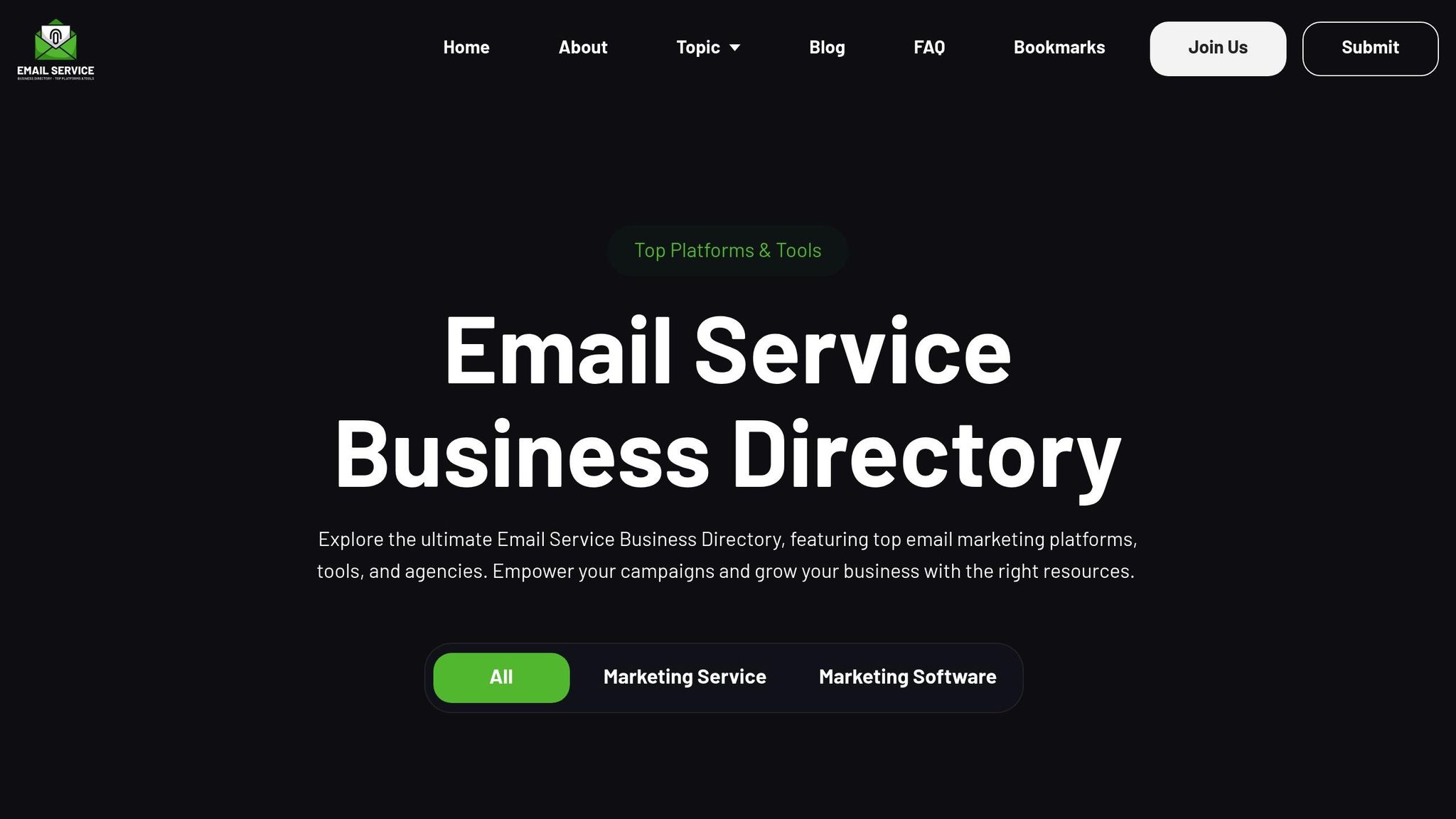Hidden costs in email platforms can drain your budget if you're not careful. While many platforms advertise affordable pricing, extra fees for features, overages, or data handling often go unnoticed until they pile up. Here’s what you need to know to avoid surprises:
- Pricing Models: Platforms use subscription plans, pay-per-use models, or tiered pricing. Each has limitations that might lead to extra fees as your needs grow.
- Overage Fees: Exceeding limits on contacts or emails can result in charges. For example, Mailchimp charges $6.50 for 250 extra contacts on its Essentials plan.
- Setup Costs: Onboarding and configuration fees can range from hundreds to thousands of dollars.
- Data Transfer Charges: Migrating data or cleaning contact lists often incurs additional costs.
- Tier Limitations: Advanced features and better support are usually locked behind higher-priced plans.
Key Tip: Always review contracts for terms like auto-renewals, additional fees, and cancellation policies. Regularly monitor your usage and invoices to catch unexpected charges early. Tools like the Email Service Business Directory can help you compare costs and features across platforms before committing.
I tried every email marketing tool. Here's the BEST
How Email Platform Pricing Works
Getting a handle on how email platforms set their pricing can help you avoid unexpected charges. Most platforms follow a few common pricing models, but the way these are applied can sometimes hide extra costs.
Pricing Models and Their Impact
Email platforms typically rely on three main pricing structures: subscription plans, pay-per-use models, and tiered pricing.
- Subscription plans charge a fixed monthly fee, which usually includes a set number of contacts or emails. It’s predictable but may not cover everything you need.
- Pay-per-use models bill you based on how much you use the platform. This can work well for smaller campaigns but might lead to higher costs if your email volume spikes.
- Tiered pricing combines these approaches, offering different service levels at increasing price points. While the entry-level tier might look affordable, unlocking advanced features or better support often requires upgrading to a pricier plan.
It’s important to dig into these structures to understand how they might affect your budget as your email marketing needs grow.
Contact and Email Volume: The Fine Print
Most email platforms set limits on two key areas: the number of contacts you can store and the volume of emails you can send each billing cycle. Exceeding these limits usually results in additional fees. For instance, if your contact list expands beyond your plan's cap or if you send more emails than your plan allows, you’ll likely face extra charges for those overages.
Here’s the tricky part: these limits typically reset every month, but your contact list doesn’t shrink. If you’re not keeping an eye on your growth and usage, you could end up with surprise fees month after month.
Features and Support: What You Get at Each Tier
To get you to upgrade, platforms often reserve their most advanced features for higher-priced plans.
- Basic plans usually cover the essentials - like sending emails - but lack extras like automation, A/B testing, or detailed analytics.
- Premium tiers unlock these advanced tools, along with perks like custom templates, faster customer support, or even a dedicated account manager.
- Integration with other tools, like CRMs or e-commerce platforms, is another feature that often requires a higher-tier plan.
The level of customer support also varies. Basic plans might only offer email support with slower response times, while premium plans provide faster help, phone support, or even one-on-one assistance.
As your marketing needs evolve, you may find that staying on a basic plan limits your options, pushing you toward higher-tier plans that come with significantly higher costs.
Understanding these pricing structures can help you plan better and avoid surprises when it comes to your email marketing budget.
Hidden Costs You Should Look For
Keeping an eye on hidden fees is a smart way to protect your email marketing budget. While platforms often promote their monthly pricing, there are additional charges that can sneak up on you, significantly raising your costs. These extra expenses tend to fall into a few key areas that businesses might overlook.
Setup and Onboarding Fees
Some email platforms charge a one-time setup fee that isn’t always obvious in their advertised pricing. These fees can range from a few hundred to several thousand dollars, depending on how complex your setup is and the level of assistance you need.
These charges typically cover things like account configuration, template design, and basic training. For example, providers might charge hundreds - or even thousands - for custom email templates or in-depth onboarding services.
Be sure to carefully review contracts for terms like "setup fees", "onboarding costs", or "implementation charges." These fees are often buried in the fine print or casually mentioned during sales calls. Always ask directly about one-time costs before signing up, and request a detailed breakdown in writing. Beyond these initial charges, be mindful of extra fees that can kick in if you exceed your plan's limits.
Overage Charges
Overage fees are applied when you go beyond your plan’s contact or email sending limits. These costs can add up quickly, especially if your email list or campaigns grow unexpectedly.
Take Mailchimp, for example. On their Essentials plan (up to 500 contacts), you’ll pay an additional $6.50 for 250 extra contacts and 2,500 more email sends. On their Standard plan (up to 10,000 contacts), overage fees jump to $25.50 for 1,000 extra contacts and 12,000 additional sends. Premium plan users face even higher charges - $52.00 for 1,000 extra contacts and 15,000 more sends.
Some platforms also calculate fees based on your peak contact count during the billing cycle. Even if your list size decreases later in the month, you could still be charged for the highest number of contacts. These unexpected charges can quickly eat into your ROI if you’re not paying attention. And don’t forget about data-related fees - they can sneak up on you as your operations grow.
Data Handling and Transfer Costs
Transferring data, exporting detailed analytics, or reconfiguring workflows can come with extra charges, often ranging from $50 to several hundred dollars. If you’re thinking about switching platforms, be prepared for potentially hefty migration fees. Moving subscriber lists, email templates, automation workflows, and historical campaign data isn’t always straightforward - or free.
Some platforms also charge for list hygiene services, which remove invalid or unengaged contacts. While this can help improve deliverability, it’s an expense that’s not always mentioned upfront.
Switching platforms often means additional setup and reconfiguration costs, too. You might need to rebuild email flows, redesign signup forms, recreate segmentation rules, and reconnect integrations. This process could require professional help, adding to the bill. Training your team to use a new platform can also become an unexpected expense if onboarding or ongoing support isn’t included in the setup fee.
To avoid surprises, keep an eye on your contact growth and email volume. Set up alerts for when you’re nearing your plan limits, and regularly review your monthly statements to catch any unexpected fees early. These simple steps can help you stay on top of your costs and avoid budget surprises.
sbb-itb-6e7333f
How to Review Contracts and Agreements
Once you've identified potential hidden charges, take a closer look at your contract to avoid surprises down the line. Contracts for email platforms, in particular, often contain critical details about fees, service limitations, and billing terms that can significantly impact your expenses.
Key Sections to Examine
Pay close attention to sections like "Additional Fees," "Service Limitations," and "Billing Terms." These areas often spell out extra charges that may not be prominently featured in advertising. For instance, service limitations typically explain what happens if you exceed your usage limits, helping you steer clear of unexpected fees.
Auto-Renewal and Cancellation Policies
Be sure to review clauses related to auto-renewals, cancellation penalties, and minimum commitment periods. These terms can lead to unplanned extensions or costs if overlooked. Also, check if there's a specific notification period required to cancel your service without incurring additional charges.
Reviewing Your Bills and Statements
Make it a habit to go through your monthly invoices. These should clearly break down the base subscription cost and any extra fees, formatted in U.S. standards (e.g., $XX.XX). If something doesn’t add up, don’t hesitate to reach out to customer support to resolve discrepancies.
Tools for Comparing Costs and Features
After identifying potential hidden fees, it's time to use reliable tools to compare pricing, features, and additional costs across email platforms. Here's how the Email Service Business Directory can make this process easier.
How the Email Service Business Directory Helps

The Email Service Business Directory acts as a one-stop resource, letting you compare plans, features, and pricing across leading email marketing platforms - all without jumping between multiple vendor websites. This streamlined approach makes it easier to spot pricing differences that might not stand out when reviewing platforms individually, helping you avoid those sneaky hidden costs.
For example, Mailchimp charges $79.00 for 10,000 subscribers, while Sender.net provides the same capacity for just $23.00. The directory also highlights platforms with specialized features and pricing models. Take ActiveCampaign, for instance - it blends advanced automation with built-in CRM tools, making it a powerful choice. However, this added sophistication comes with a higher price tag.
The directory doesn't stop at pricing - it also includes user ratings and reviews to give you a clearer picture of actual costs and user experiences. For instance, Sender boasts excellent ratings (Capterra: 4.7/5.0, Trustpilot: 4.8/5.0, G2: 4.5/5.0), while Klaviyo receives mixed feedback (Capterra: 4.6/5.0, Trustpilot: 2.2/5.0, G2: 4.6/5.0).
Building a Cost-Benefit Analysis
With these insights in hand, you can create a detailed cost-benefit analysis tailored to your business needs. A simple comparison table can help you break down all costs, including hidden fees, for each platform you're considering. Keep in mind that entry-level pricing often starts at around $7.00 per month but can skyrocket to $1,499.00 or more for enterprise-level solutions.
Key steps for your analysis:
- Account for setup fees, data transfer costs, overage charges, and feature limitations.
- Calculate the annual cost of ownership instead of just focusing on monthly fees.
- Include growth projections to anticipate future expenses.
- Note trial periods and guarantees to confirm actual costs before committing.
For instance, a platform charging $50.00 per month with no hidden fees could end up being more affordable than one charging $30.00 per month but tacking on occasional overage charges.
"You're not just buying a tool; you're investing in a scalable communication strategy", explains Marisa Lather.
Many email marketing platforms also offer free trials - often without requiring credit card details. This gives you the chance to test their features and ensure there are no hidden costs before making a long-term commitment.
Conclusion: Avoid Hidden Costs and Get Better ROI
Getting a handle on email platform pricing is key to steering clear of surprise charges that can eat away at your marketing budget. Hidden fees - like setup charges, overage costs, or data transfer expenses - can sneak up on you, so keeping an eye out for these is crucial.
To make the most of your investment, take the time to comb through contracts for clauses on auto-renewals, cancellations, or usage limits that might result in extra fees. When managed well, email marketing can yield an impressive $42 return for every $1 spent, but only if those hidden costs are kept in check.
Tools like the Email Service Business Directory can help you compare platforms side by side, offering the clarity you need to make smarter choices. Focus on the features and costs that directly impact your bottom line.
Stay vigilant by monitoring monthly bills, usage reports, and the growth of your contact lists. Regularly cleaning your lists and leveraging automation can help you avoid hitting unexpected limits and streamline your efforts.
If hidden costs do surface, don’t wait. Revisit your contract terms to explore downgrade or cancellation options, negotiate better terms, or turn to the Email Service Business Directory to find a platform with more straightforward pricing.
FAQs
What hidden costs should I look out for when selecting an email marketing platform?
When picking an email marketing platform, be mindful of hidden fees that could strain your budget. These often include:
- Overage charges for surpassing subscriber or email send limits.
- Onboarding or setup fees, which some platforms require to get started.
- Additional costs for features like automation, analytics, or integrating with third-party tools.
- Data-related charges, such as fees for exporting, storing, or archiving large datasets.
Take the time to thoroughly review pricing plans and contracts to avoid unexpected expenses. Make sure the platform fits your current needs and future growth plans.
How can I track my email platform usage to avoid unexpected charges?
To prevent surprise charges on your email platform, make it a habit to check your usage through the platform's dashboard or account settings. Most platforms offer the option to set up usage alerts - typically at 70–90% of your limit - so you can address potential overages before they happen.
Select a plan that matches your email volume requirements, and if your campaigns are expanding, consider upgrading ahead of time. Keeping an eye on your usage helps you manage costs effectively and ensures your email campaigns continue without any hiccups.
How can I choose an email platform that fits my budget and business needs?
To choose an email platform that fits your budget and needs, start by outlining what your business requires. Think about factors like the size of your contact list, the features you’ll actually use, and your overall marketing objectives. Focus on platforms that include must-have tools such as automation, segmentation, and customizable templates, while skipping those that charge for features you don’t need.
Take a close look at the pricing plans, and don’t forget to check for hidden costs like overage fees or extra charges for premium options. It’s smart to go with a platform that offers scalable plans so it can grow alongside your business. Lastly, prioritize user-friendly platforms to save yourself the headache of dealing with overly complicated tools or spending extra time on training.


